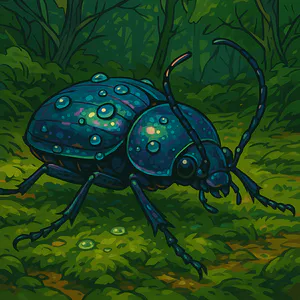Generate bug names
More Animal Name Generators- <% result.name %>
Discover all Story Shack apps
Explore the Wonder of Bug Names
Every great story or game can benefit from unique and imaginative bug names. Whether you're creating a fantastical world or a whimsical adventure, let these questions inspire you to think creatively about the bugs that inhabit your universe.
- What unusual habitat does your bug thrive in, and how does this influence its name?
- What special abilities or traits does your bug possess that could inspire a clever name?
- How does your bug interact with other creatures or the environment, and what naming conventions might come from this interaction?
- What colors or patterns define your bug, and how can these characteristics be woven into a memorable name?
- If your bug were to have a personality, what would it be like and how could that shape its name?
Frequently Asked Questions
Get answers to your common queries about the Bug Name Generator and unleash your creative potential.
How does the Bug Name Generator work?
The generator combines various themes and attributes to create unique and imaginative bug names with each click.
Can I choose the type of bug name I want?
Currently, there is no option to specify; however, you can generate names repeatedly until you discover one that fits your vision.
Are all the names completely original?
The names are randomly generated, ensuring a diverse array of options, though some may share similarities.
How many bug names can I generate?
You can create an unlimited number of names; simply click to generate as many as you like.
How do I save my favorite bug names?
You can easily copy a name by clicking on it, or use the heart icon to save it for future reference.
What are good bug names?
There's thousands of random bug names in this generator. Here are some samples to start:
- Night Earwig
- Drone Louse
- Acidic Slater
- Cemetery Weta
- Jewel Katydid
- Volatile Grub
- Nimble Weevil
- Oceanic Horntail
- Gliding Flatworm
- Acid Bug
About the creator
All idea generators and writing tools on The Story Shack are carefully crafted by storyteller and developer Martin Hooijmans. During the day I work on tech solutions. In my free hours I love diving into stories, be it reading, writing, gaming, roleplaying, you name it, I probably enjoy it. The Story Shack is my way of giving back to the global storytelling community. It's a huge creative outlet where I love bringing my ideas to life. Thanks for coming by, and if you enjoyed this tool, make sure you check out a few more!












































